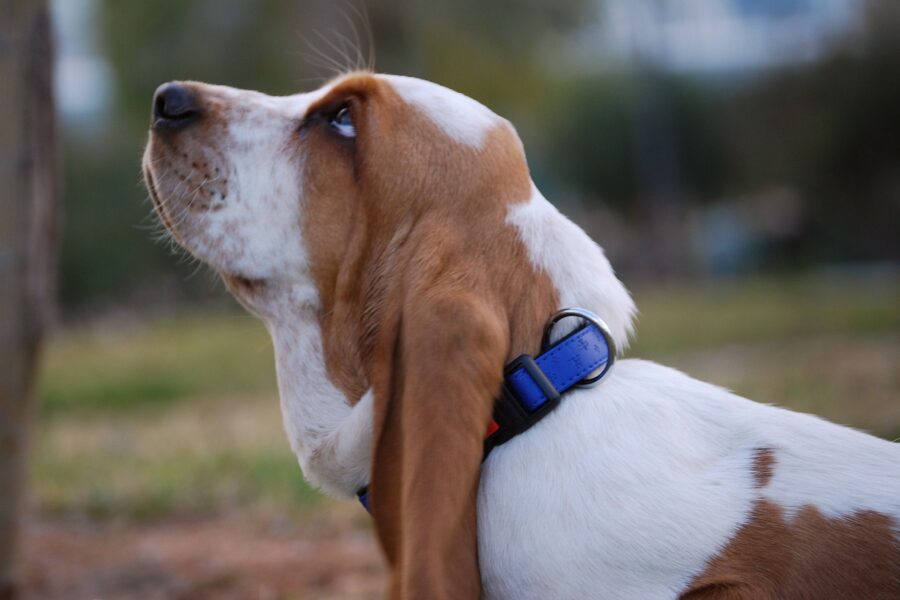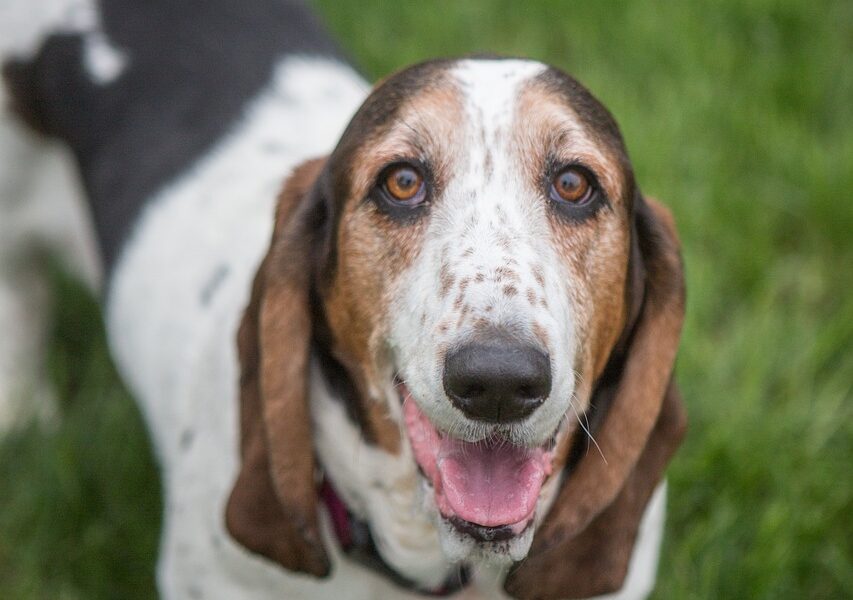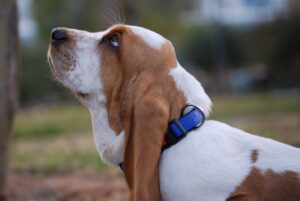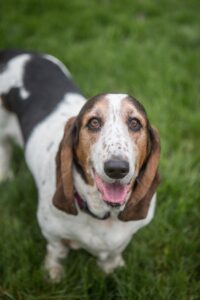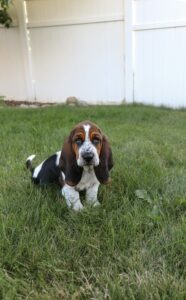Basset hounds are not the healthiest dogs. There are a lot of medical conditions common to the Basset hound. Even though their lifespan is ten to twelve years on average, many experts argue that the realistic range is closer to between eight and ten years. Their body build and genetics make them prone to a lot of health conditions.
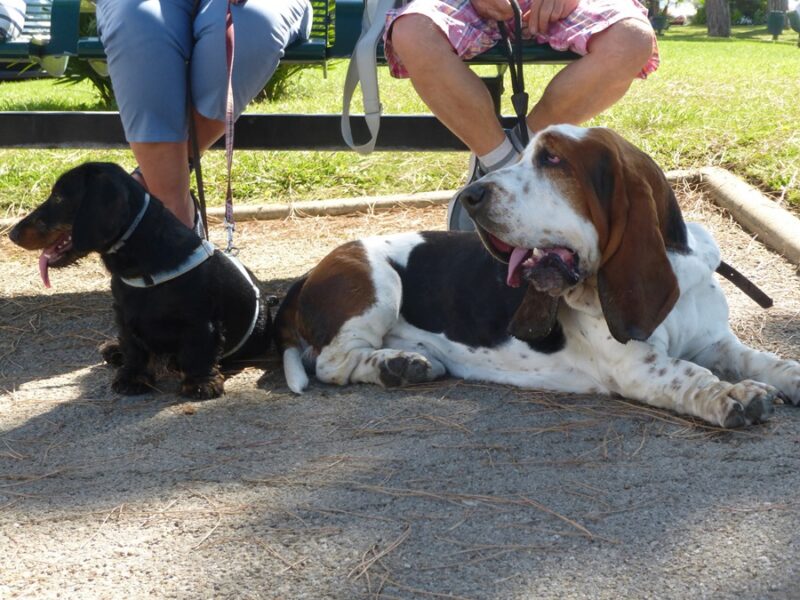
Which medical conditions are common to the Basset hound? The most common medical conditions common to the Basset hound are Osteochondrodysplasia, pituitary dwarfism, ear infections, diabetes, hip dysplasia, eye, and nose infections.
[ez-toc]
Basset Hound’s Spine Related Issues
Basset hounds are notoriously known for their spine issues. Because of their weight and height, basset hounds tend to have a lot of spine issues. The chance of having a back problem increases if the basset hound is overweight. Here are the two most common medical conditions related to the spine:
1. Osteochondrodysplasia
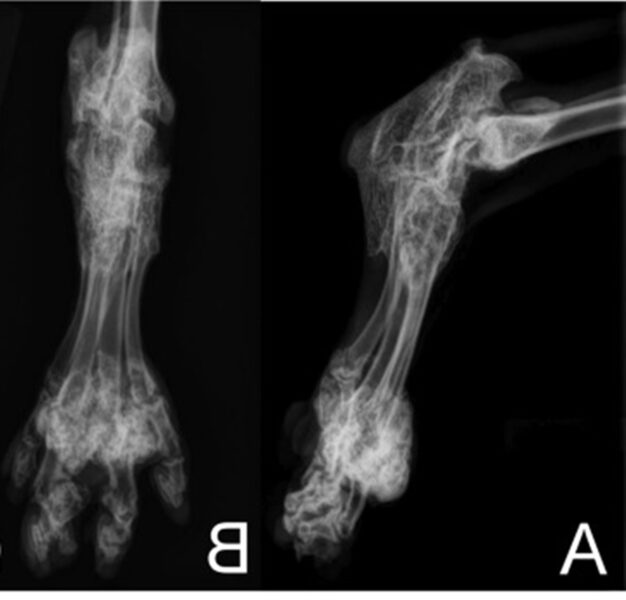
Basset hounds are known for their long plump bodies and short stump legs. Their bodies were carefully planned when the Basset blueprints were created. Basset hounds have a heavy bone structure coupled with stubby limbs and elongated torsos. This body build helped them run smoothly and powerfully back in their hunting days. They were able to run through the thickets and brush with ease.
Two-thirds of a Basset Hound’s body weight comes from the front end.
Basset hounds have a massive chest that protects their large lungs and allow the strenuous breathing required for long endurance hunts. Even the paws of the basset hound are massive and very handy when it comes to digging.
Because of their signature body, Osteochondrodysplasia or OCD is one of the most common medical conditions that affect the Basset hound breed. OCD is skeletal dwarfism in dogs that affects the bones and cartilage. There is no way to prevent OCD because it begins in the fetus. Basset hounds with OCD experience a mutation in the SLC13A1 gene which leads to a normal size trunk but disproportionately short legs. The abnormality in the gene is responsible for slow bone growth and other deformities.
The basset hounds have osteochondrodysplasia programmed into their DNA. This phenomenon is called Achondroplasia.
There is no cure for OCD, but precautions can and must be taken to keep your basset hound’s bones healthy because they are not as strong as normal bones. Basset hounds have a spine with cushions shaped like discs that separate vertebra from one another. These cushions can become inflamed or damaged and can result in pain and loss of mobility.
What precautions can I take to safeguard my Basset hound’s bones?
- Don’t let your basset hound jump down from high places. Jumping off the bed or couch can be very dangerous too.
- Until your basset hound is one year old, he shouldn’t go up and down the stairs by himself.
- Use a no-pull harness-type leash.
- Don’t let your basset hound play with large dogs that have the tendency to jump on their backs when playing.
- Let your small children know not to push or attempt to ride on your basset hound’s back.
- If you ever see that your basset hound is walking like he is in pain, seek medical attention from his vet.
2. Pituitary Dwarfism
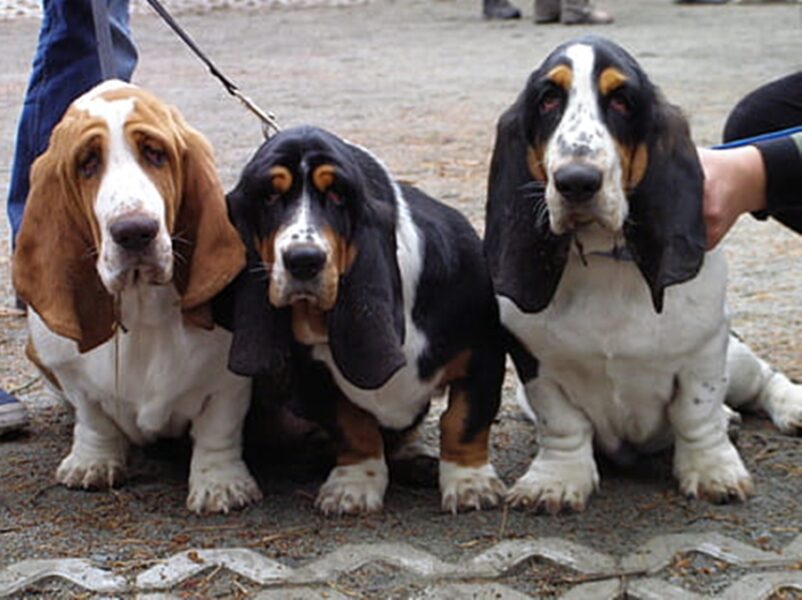
PD (Pituitary dwarfism) is a hit-and-miss genetic disorder that not all basset hounds have, but it is very common to the breed. It is another implication of human intervention in the creation of basset hounds.
Pituitary dwarfism is caused by damage to the pituitary gland because of the interference of a neoplastic or degenerative process. A damaged pituitary gland isn’t able to function as it should which leads to a deficiency in growth hormone. Without a proper level of growth hormone, a lot of issues occur such as bone deformities, slow intelligence, and overall dullness, renal failure, shortness of life (4 to 5 years on average without treatment).
What are the most common signs of Pituitary Dwarfism:
- Failure to grow
- Legs that are shorter than normal
- Bowed legs
- Bulging eyes
- Longer than normal body
- Swollen abdomen
- Tongues sticking out from mouth
- Short jaw with under-bite
- Feet turned outward
- High-pitched bark
- Swollen joints
- Abnormal haircoat growth
- Difficulty breathing
- Frequent panting
- Slow mentality
- Abnormally large head
- Smaller than normal testicles
- Dark and/or dull coat
How To Know If My Basset Hound Has Pituitary Dwarfism
You can’t really determine if your basset hound has pituitary dwarfism because all basset hounds have short legs and long bodies. But, if you notice that your puppy has difficulty breathing or slow mental function, make sure to take him to the vet.
Test for Pituitary Dwarfism includes checking:
- Your basset hound’s pulse
- Respiration rate
- Body temperature
- Weight
- Height
- Auscultation
- Palpitation
- Endocrine test to examine plasma insulin, concentrating on the growth factor-1 hormones.
Is There a Treatment For Pituitary Dwarfism?
Unfortunately, there is no cure for pituitary dwarfism, but there is a treatment. The treatment depends on which type of PD it is.
The genetic kind of pituitary dwarfism responds very well to therapeutic treatments such as with pig hormones, progestin, or thyroid hormones.
Without treatment, basset hounds don’t live long and they experience a lot of discomfort throughout their life. With lifelong treatment, the life of basset hounds that have pituitary dwarfism can be greatly extended.
Does My Basset Hound Have Thrombopathy?
Thrombopathy is also known as thrombopathia is a condition that Basset hounds can inherit or acquire making it one of the most common medical conditions that affect the Basset hound breed. Basically, when thrombopathy occurs within the Basset hound family, it is genetically inherited. The thrombopathy is a disorder that causes problems with the blood platelets’ ability to coagulate and heal. Basset hounds are prone to thrombopathies and many call this disease ”the basset hound thrombopathy”.
Most common symptoms of thrombopathy include:
- Bleeding in mucus membranes
- Wounds that heal slowly or not at all
- Nasal bleeding
- Bleeding in the ears
If you notice that your basset hound is bleeding or his wounds are healing slowly, take him to the vet clinic as soon as possible. Sadly, the survival rate for this condition is only two to four years on average.
Basset Hounds and Ear Infections
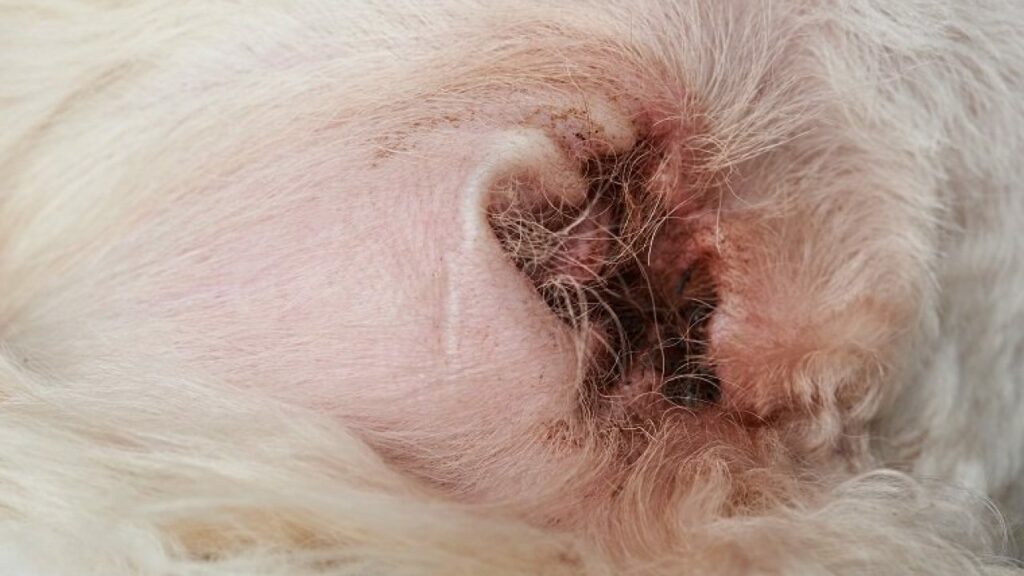
Basset hounds are prone to ear infections because they pick up a lot of gunk in their ears with their low to ground stature. A great way to notice an ear infection is a funky smell.
With their gigantic adorable floppy ears, basset hounds tend to sweep up dirt, debris, and lots of bacteria from the ground. It is safe to say that ear infections plague the Basset hound breed.
Statistics say that 90% of Basset Hounds will have an ear infection at some point in their lives.
The main causes for ear infections in basset hounds are:
- Germs are caught in the ear through dirt, debris, or bacteria and are known to cause an ear infection.
- Moisture in the ear canal. Basset hound’s ear canals are more vertical than human ears are. They have an L-shape and easily trap fluid and form an ear infection.
- Obstacle blockage is another cause of ear infections, although they are not so common in the breed, but are still possible.
- Ear mites are also another source of ear infection and ear irritation.
- Skin and food allergies can also lead to ear infections.
- Autoimmune dysfunctions
- Endocrine disorders such as thyroid issues.
- Wax buildup
- Ear injuries
- Foreign bodies like bugs
- Excessive ear cleaning can lead to ear infections.
There are three types of ear infections that affect the Basset hound breed: interna, media, and otitis externa. The otitis externa is the most common ear infection that Basset hounds suffer from. This infection is characterized by inflammation of the layer of cells that line the external portion of the ear’s canal.
The otitis media or interna usually occur when an untreated otitis externa infection has spread to the deeper layers of the ear canal.
Untreated otitis externa can be very painful for your basset hound and can cause:
- Facial paralysis
- Deafness
- Loss of balance
- Disorientation
- Dizziness
- Vertigo
- Blurred vision
- Stumbling or falling
You can tell that your Basset hound has an ear infection if some of these signs are present:
- Scratching or pawing at the ear
- Whining
- Head shaking
- Chewing of the arms and paws
- Foul odor
- Dark discharge
- Redness or swelling of the ear
Prevention from ear infections begins at home. I have an article that teaches How To Clean Your Basset Hound’s Ears to avoid ear infections. If you notice that your puppy has an ear infection, do not treat them on your own. Instead, take your basset hound to the vet to get some tests done.
A vet can diagnose an ear infection by performing:
- Physical examination with an Otoscope
- Visually looking for swelling, redness, or discharge
- Gently touching the ear to test for sensitivity and pain
- Examining samples under a microscope taken via swab
- Lab testing of culture samples taken from the ear
- A biopsy or X-ray
Basset Hound’s Eye and Nose Health
Basset hounds have droopy eyes that collect a lot of dirt. The basset hound’s eyes have a defensive mechanism where the eyes produce natural tears that cleans the eyes from dirt and debris. Cleaning around your basset hound eyes is mandatory. Using a soft, damp cloth every few days to clean around the eyes will decrease the chance of an eye infection. If you notice a yellow discharge around the eyes, take your puppy to the vet. The vet will then examine your basset hound’s eyes and confirm if they are infected.
Being a hunting dog, the basset hound’s long snout works overtime. The basset hound will sniff everything, including dirt and an occasional bug or grass too. Their noses are known for being runny. That’s why it is important that you keep their noses clean by wiping them with a soft, damp cloth once or twice per week. If you notice that your basset hound has difficulty breathing through his nose, seek medical attention.
Diabetes in Basset Hound Breed
Diabetes is a disorder that affects the basset hound’s metabolic system and it fails to properly metabolize the food into fuel for the body due to insufficient amounts of insulin being discharged from the pancreas.
Sugar diabetes, also known as Diabetes mellitus is the type of diabetes that occurs most often in basset hounds.
Factors like age, poor diet, obesity, chronic pancreatitis, Cushing’s disease, steroid medications, poor health, and genetics put your basset hound at risk for contracting diabetes. A simple urine test will reveal if your basset hound is diabetic.
Common signs that your basset hound is diabetic are:
- Excessive thirst
- Excessive urination
- Weight loss without another cause
- Refusal to eat or an insidious appetite
- Confusion
- Extreme lethargy
If your Basset hound is diabetic, his body will not be able to produce insulin on his own, and insulin injections would be required.
Hip Dysplasia
Due to their weak leg bones and heavy bodies, Basset hounds are prone to Hip Dysplasia. Although Hip dysplasia can be acquired environmentally by jumping from high places or running on rough terrain, that is not the case in the Basset hound breed.
Hip dysplasia involves a malformation of the femur bone that fits into the hip joint and allows pivoting to occur for motions such as walking or running. The malformation or hip dysplasia causes friction and over time arthritis sets in and the affected joint causes pain when your pooch moves.
If your basset hound is limping, favoring a limp, or refusing to move, you should take him to the vet to be examined. Usually, the vet will perform an X-ray and formally diagnose the condition. In some cases, surgery is needed.


